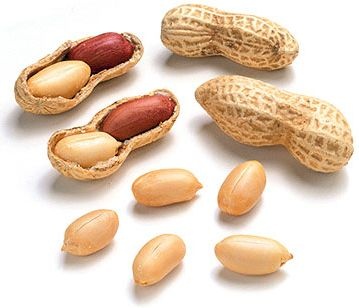2: Number of pods/plant:
A perusal of data given in 2-A revealed that locations significantly influenced the number of pods/plant. Maximum number of pods were recorded in L1 (83.7) followed by L2 (53.8) and L3 (46.9). Improved practices (P1) produced maximum number of pods/plant (62.6) which is 36.2% more than that recorded under (P2) farmers practices (45.9). No significant interaction between locations × practices was observed. However, Improved practices (P1) produced maximum pods/ plant (92.9) at L1. Data in table 2-B showed that varieties were noticed to be non-significant. Improved variety (V1) produced maximum pods/plant (58.8) which is 18.3% more than that recorded if (V2) farmers variety (49.7 pods/plant), while locations were significantly different. Maximum number of pods/plant were recorded for L1 (83.6) followed by L2 (53.8), while L4 produced minimum number of pods/plant (33). Interaction between practices × varieties (table 2-C) indicates that farmer practices (P2) with improved variety (V1) produced maximum number of pods/plant (67.1) followed by farmer practices (P2) with farmer variety (V2) i.e. 58.2 pods/plant. Locations × practices ×varieties (table 2-D) was found to be non-significant, however at L1 with improved practices (P1) using improved variety (V1) produced maximum pods/plant (98.3).
3: Pod yield kg/ha
Data given in table-3A showed that practices alone did not statistically affect the pod yield, however, improved practices (P1) produced maximum pod yield (3220.5 kg/ha), while locations were noticed significantly different. Maximum pod yield (kg/ha) were recorded at L1 (4163.2 kg/ha) followed by 3194.8 kg/ha at L2. Minimum pod yield (kg/ha) was observed at L4 (1842.1 kg/ha). Similarly interaction between location × practices was found to be statistically in-effective, however, maximum pod yield (kg/ha) was recorded at L1 with (P2) farmer practices (4335 kg/ha). Data in table-3B revealed that varieties showed non-significantly effect to pod yield/ha. Maximum pod yield of 3429.8 kg/ha was produced by improved variety (V1) which is 28.7% more than that recorded in (V2) farmer variety (2664.8 kg/ha). Interaction between locations × varieties was statistically non significant, however, at L1 using improved variety (V1) produced maximum pod yield (4508.8 kg/ha). Similarly in interaction between practices × varieties (Table-3C) using improved variety (V1) with improved practices (P1) produced maximum pod yield (3636.7 kg/ha). Locations × practices × varieties (Table-3D) was found to be statistically in-effective. With improved practices (P1) using improved variety (V1) at L1 produced maximum pod yield (4917.5 kg/ha). The groundnut genotypes with high field emergence followed by high plant stand and low mortality under saline conditions could be considered as tolerant of salinity stress. However, data on yielding ability is more vital for arriving at meaningful conclusion, as increasing salinity decrease pod yield (Hunshal et al., 1991; Singh et al., 2007).




